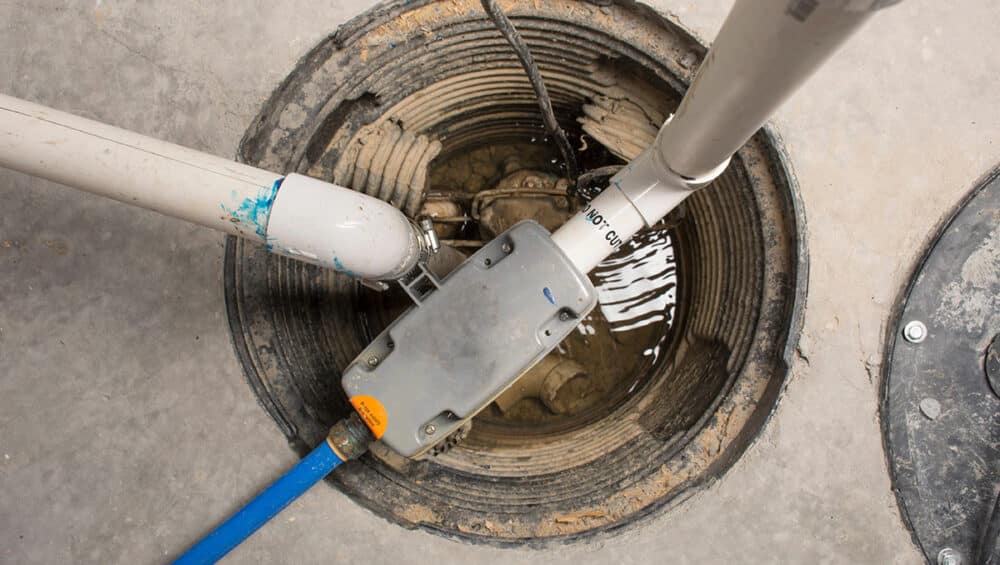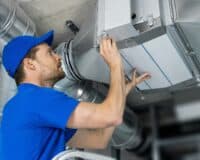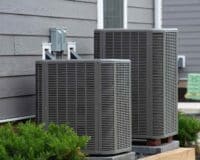When you contemplate your home’s most invaluable equipment, your sump pump may not come to mind right away. Nevertheless, it should be a top contender due to the fact that it prevents flooding in and around your basement while ensuring dryness and comfortability.
Taking the time to comprehend how a sump pump operates is essential in order to ensure it remains well-maintained, and that you proactively steer clear of any water issues on your basement floor. Let’s dive into the process and take an in-depth look at what makes this hardworking machine function so effectively.
The Basics of How Sump Pumps Work
If you own a home or building, it’s important to be aware of the sump pump located in its lowest area. Prevent flooding and water damage with this ingenious device that pumps away any excess water from pits beneath your structure when they reach certain levels. Depending on the quantity of moisture in your location, you can expect to see your sump pump running regularly – so why not make sure it is working properly?
Finding the pit and pump of your sump system is often a straightforward task, yet there are other components that also help keep moisture out. The discharge pipe moves water from the basin to outdoors while ensuring it doesn’t stream back into the foundation; plus, it should be equipped with a check valve which guarantees unwanted liquid won’t make its way inwards. All these mechanisms must work seamlessly if you want optimal protection against any potential flooding!
Within a sump pump lies an electric motor with a fan-like mechanism that expels water through the pipe. While electricity is typically what energizes this motor, you may acquire a hand operated version as well. And don’t forget about the battery backup for your sump pump; it’ll come in handy if there’s ever a power outage during severe weather, protecting your home from flooding when you need it most!
Just like your toilet tank, your sump pump is activated by a float sensor. To avoid any unnecessary hassles and problems in the future, ensure that you regularly inspect the float sensor as well as consistently maintain your sump pump’s condition. Additionally, if needed you can manually trigger your sump pump yourself – making sure it works optimally!
Sump Pump Maintenance Tips
An annual inspection of your sump pump is essential to ensure its optimal performance. Schedule this maintenance after winter so you can guarantee that it will be up and running before the snow melts and spring storms arrive. By making sure your system is functioning correctly ahead of time, you’ll have peace-of-mind knowing that no matter what Mother Nature throws at you, your sump pump has got it covered!
To start, remove the cover of the sump pump pit or basin and take a peek inside. Make sure to clear away any debris, mud or stones that you come across – this can keep clogs at bay. In addition, if there is an oil slick on top of the water’s surface or it appears greasy in texture – then your motor may be facing some problems.
Inspect the pump carefully. Before touching it or sticking your hand in, make sure to unplug the pump. Remove it and check if there is any debris obstructing within its impeller or clogging up its intake screen–if so, get rid of them promptly! Make certain that the drain hose isn’t blocked by anything or frozen solid as well. Additionally, observe whether its float can visibly move on top of the water without any hindrance; if not, then this means that it won’t function properly anymore.
It’s time for a test run. If your pump is unplugged, plug it back in before you begin the testing process. Fill up the pit with enough water to activate the float switch and get your sump pump running. Then head outside to make sure everything is pumping correctly and far away from your home – if nothing seems to be coming out despite that fact that it’s running inside, then you’ll need some more attention on the discharge pipe!
In a regular case, the testing above will clear your discharge pipe. Unfortunately, large rocks or twigs can create blockages that won’t budge with just testing alone. To fix this issue swiftly and effectively, unplug the power source and loosen the pump from its pipes. Utilizing considerable water pressure should do the trick to dislodge any debris, but if necessary you may need to employ a plumbing snake as well.
Does My Home Need a Sump Pump?
Even if your home doesn’t come with a sump pump, it could still be in need of one. To assess this, take note of the following:
If your house has a history of being inundated with floods, a sump pump may be the answer to all your troubles. However, it is prudent to first examine the exterior and identify where exactly water is entering from. It could very well be due to clogged drainage systems or landscaping that drives rainwater towards the home’s foundation walls. If you are able to solve these issues successfully then there won’t even be any need for installing a sump pump!
A sodden basement is possibly an indication of much more than just flooding. Are the walls and surface humid? This could be a sign that ground water is seeping through your home’s foundation. Low-lying areas, such as flats, naturally accumulate water due to poor drainage if the soil does not permit for proper runoff – leaving you vulnerable to floods.
If your area regularly sees a lot of rain or snow, then you know that water can cause big problems. Consider investing in a sump pump if the basement is used for living space as this will save your walls, carpeting, furniture and other items from damage due to dampness and mold. Even if it’s just storage down there – think about getting one anyway!



